
The Royal Botanical Gardens
The Royal Botanical Gardens in Burlington and Hamilton, has a lofty mission statement: "to be a living museum which serves local, regional and global communities while developing and promoting public understanding of the relationship between the plant world, humanity, and the rest of nature."
With over 2400 acres of gardens, restored woodlands, and seasonal attractions like the lilac dell, the iris beds, and the spring bulbs in the rock garden, it's a place for sturdy walking shoes. Well, I've missed the spring attractions this year, especially with our early
spring that was just a lttle bit earlier due to the Royal Botanical Gardens' location.
I take the GO train to Aldershot, and Burlington Transit the last 3km. Thought about bringing my bike on the train, but am glad I didn't, due to road construction near the Aldershot train station and lack of bike racks at the Royal Botanical Gardens.
I start off inside the building to see what's up: I'm given a site map and get my hand stamped when I pay the admittance fee. A board indoors describes what areas are good bets now. The rose garden is highlighted. But first I decide to check out some of the areas that are only accessible from the centre, since it closes at 5.
The Royal garden isn't much, but I do like the papyrus, with its mad pom-pom flowers, and what looks like Actinidia kolomikta is a stunner with its pink and green leaves: who needs flowers when the plant has it all just with leaves?
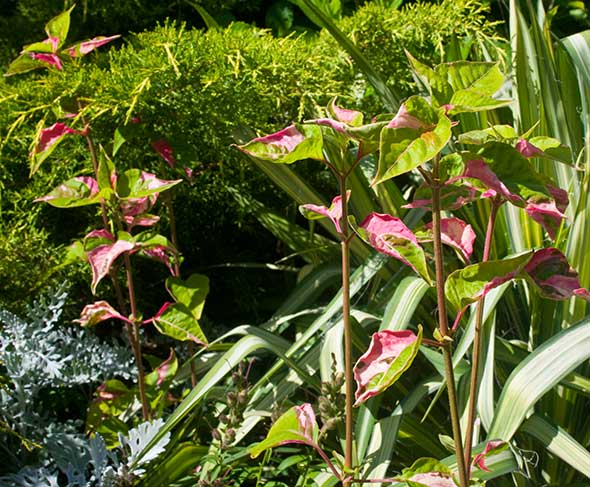
The Mediterranean Garden has me longing to return to Tuscany, even though the garden encompasses plant material from all Mediterranean climate regions, not just Europe. I wish the olive tree was in blossom.
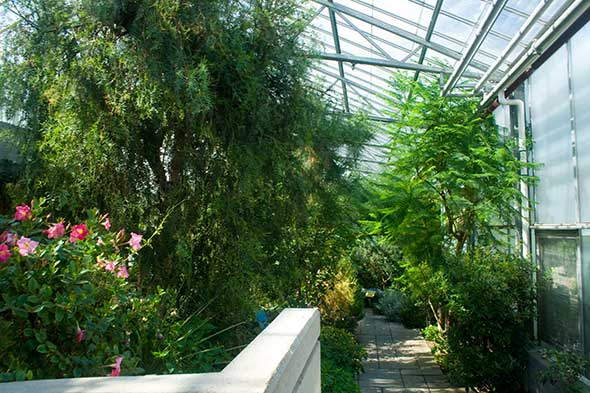
I think I see pink peppercorns growing, but the shrub/tree doesn't have a label.

The cork oak is labeled, and the texture of the trunk makes me want to reach out and feel it all over, but I don't because I am unsure about how the cork would react to thousands of people touching it and leaving skin oils on its surface.
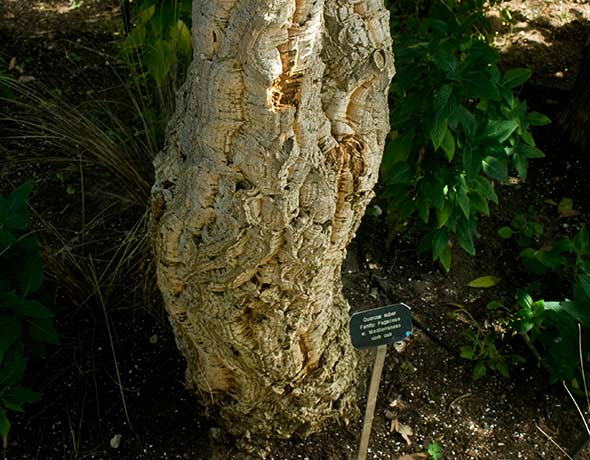
There's a sign warning people to watch their step: as part of their integrated pest management strategy, they've got three different types of lizards in the garden to eat bugs. Alas, I don't see any of them.
The kids' discovery space approaches gardening from a different vantage point: in the exhibit, the emphasis on the senses of smell, sound, and touch. There's a beautiful smoke bush just coming into bloom, and Japanese maple, red standouts among all the greenery. A prickly pear cactus is flowering.
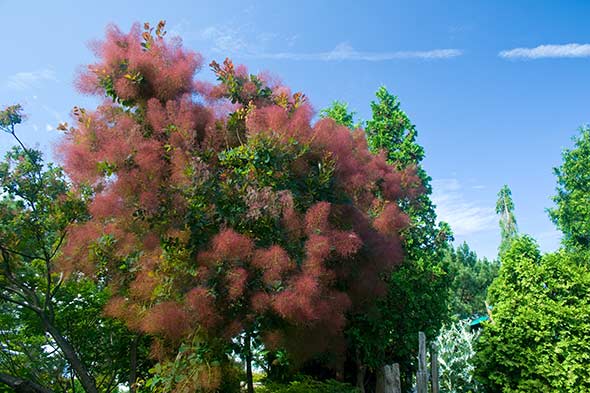
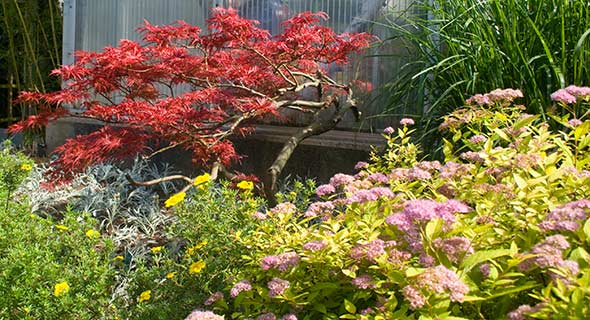
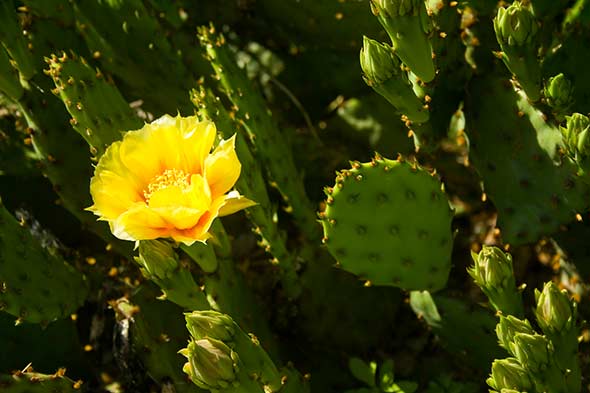
The ceramic-tiled tunnel leads me under Plains Road to the rose garden and reflecting pools (top photo).
The roses are just about at their peak - some are past, and some have yet to bloom, but it's a good time to hit the Royal Botanical Gardens for some stop-and-smell-the-roses in your life.
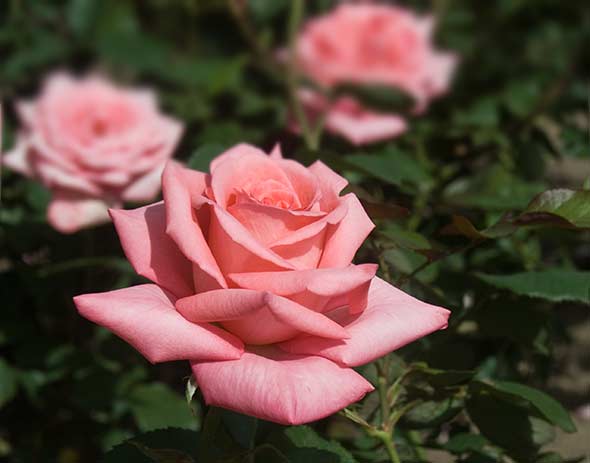
Especially the Gallicas: they have a bed of their own, and they smell the way a good rose perfume smells. A walk through the arbours, covered with climbing roses, lets me get up close to some beautiful and fragile looking flowers.

I had to take a picture of this signpost to give an idea of the diversity here, and this dosn't list all the features, just the ones within shouting distance.
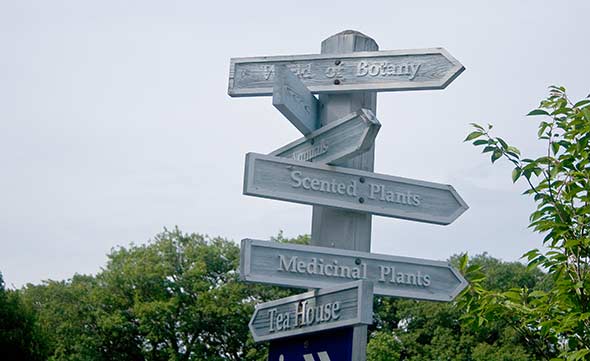
The native species and woodland gardens are my next destinations.
Both provide lots of ideas for the home gardener. Some plants are in bloom in the native species garden right now, like the columbines and prairie smoke, and others will come into their own as summer progresses.
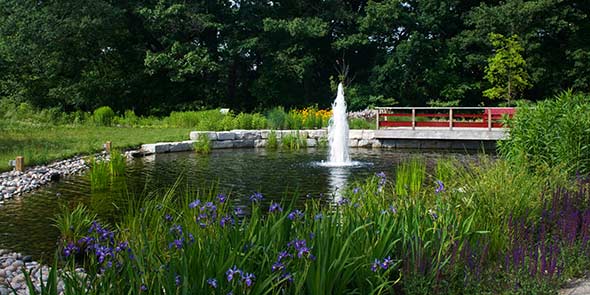
The deep shade in the woodland garden has different types of plants, and many tree species. A wooden walkway leads slowly down to the bottom of the ravine.
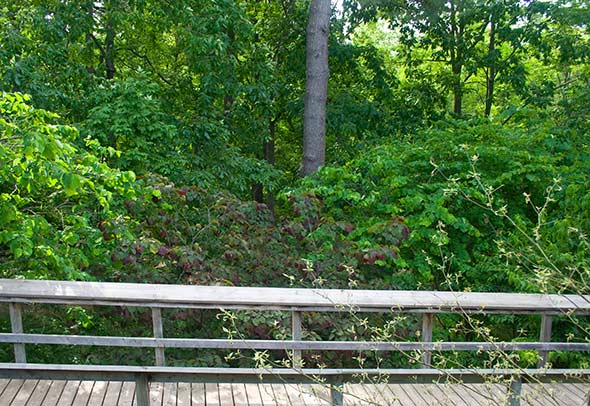
The trilliums are finished, of course, but their leaves haven't died back yet. Hostas and ferns fill in the areas around the dense tree growth.
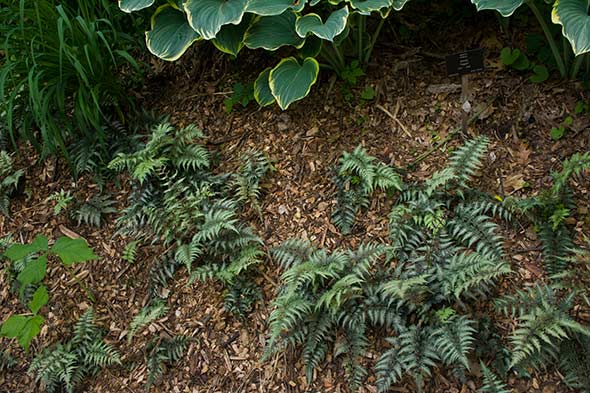
Next, I cross over the rose garden again to see the scented and medicinal plants sections, and on the way, stop to admire the dogwood trees, which are in full glorious bloom.
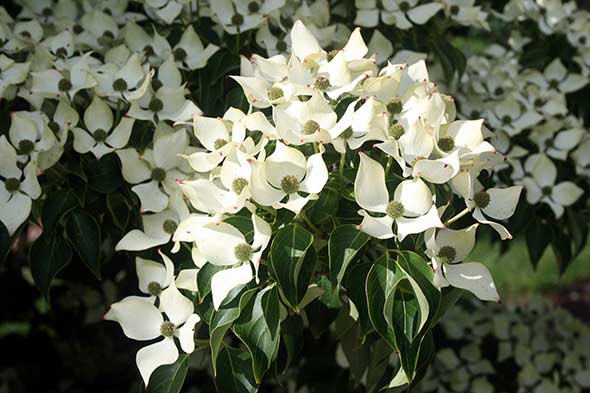
The scented garden has peonies still flowering, and the Russian sage, blue-green, is great to brush against so it releases its scent. It's a formally laid out garden.
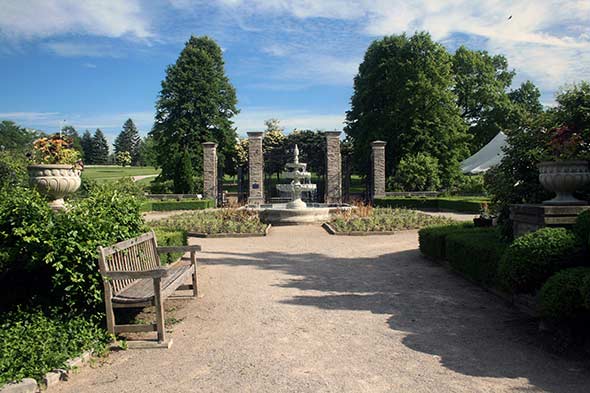
The medicinal plant section has lots of signage to read and understand how plants were used for heart, eyes, and other ailments.
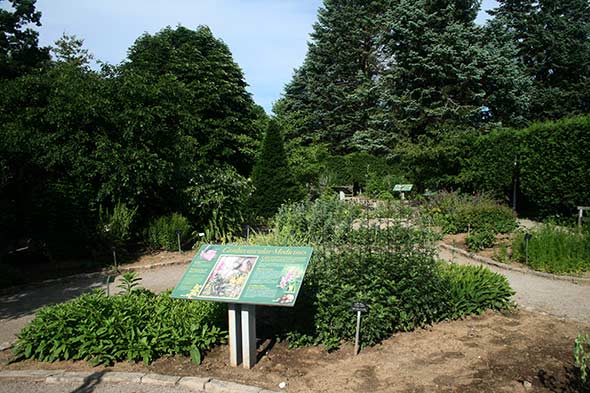
The plants are clearly labeled, and some of them we still use today. Digitalis is derived from foxgloves. On the way out, different culinary herbs are labeled with names and uses. Some of these herbs, like Purslane, aren't used much at all in North American cooking, and are treated as weeds by most of us.
To finish up the day, I head over to the rock garden. To get there is a short drive or 1.75km walk down Plains Road West, across the Wolfe Island Bridge, to York Blvd. I see a towering flowering tree along the way. It's definitely over 30 feet high, and has trumpet-shaped flowers. I look for a label, but don't see one.
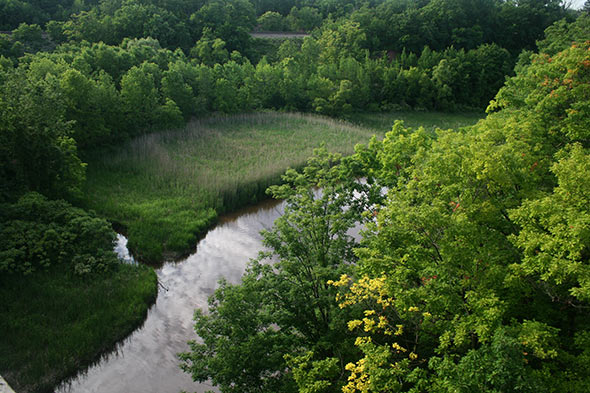
The bridge over Wolfe Island has a great view down at the island.
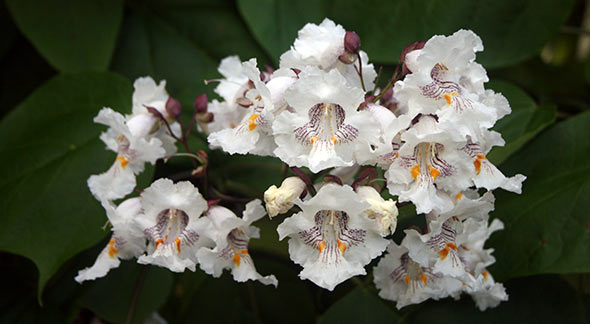
A sign alerts me at the entrance to the rock garden that they've had to turn the water feature off due to a leak, but water is still coming down the waterfall and running along the stream to the pond. All the spring bulbs are gone, and a number of beds have been set up to receive some summer annuals, but they're not in the ground yet. Maybe that has happened this week (I was there on Tuesday). It's still a very pleasant garden to visit.
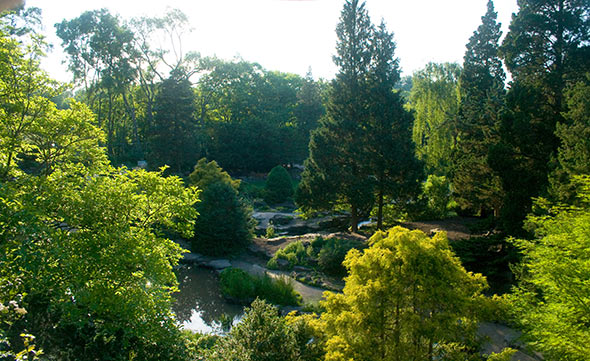
All in all, I walked for about three and a half hours, and covered a fair bit of ground. There is still lots more to see: I didn't go to the conservation area this time, or explore the full extent of the Hendrie gardens. My brain is definitely full from all the information provided.
To get there:
Public transit: GO train to Aldershot, Plains Road West bus to RBG.
Car (directions are from the RBG website): Queen Elizabeth Way to Highway 403 West (Hamilton). Exit at Highway 6 North. NOTE: road construction has redirected traffic and signs are now dated: travel 800 metres north along Hwy 6 to York Road. Exit York Road, turn right and then turn left onto the new Plains Road and come south along Plains Road crossing over the 403. Turn left at the lights to continue on Plains Road West for about 1 km, passing the glass building. Turn right into the parking lot.
Latest Videos
Latest Videos
Join the conversation Load comments







